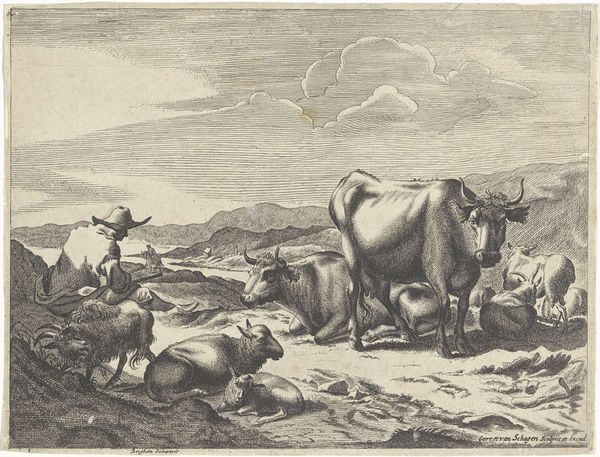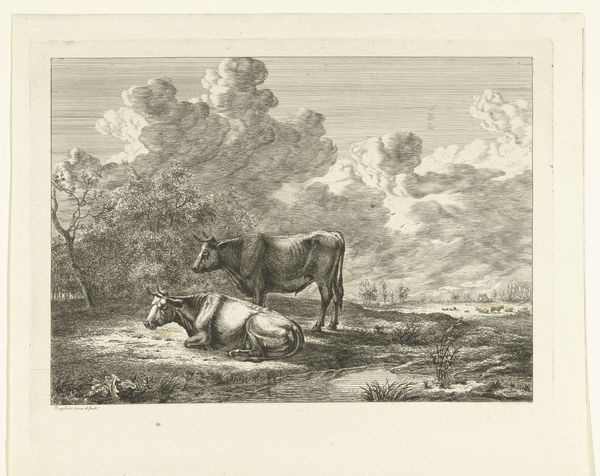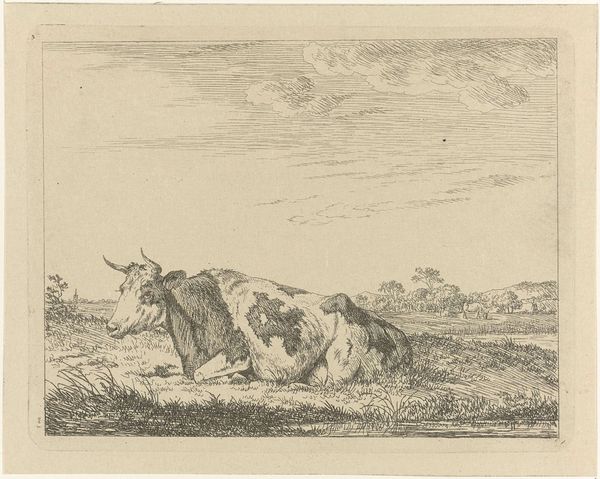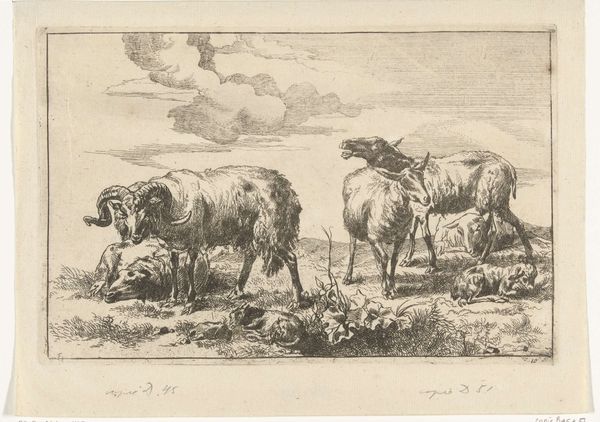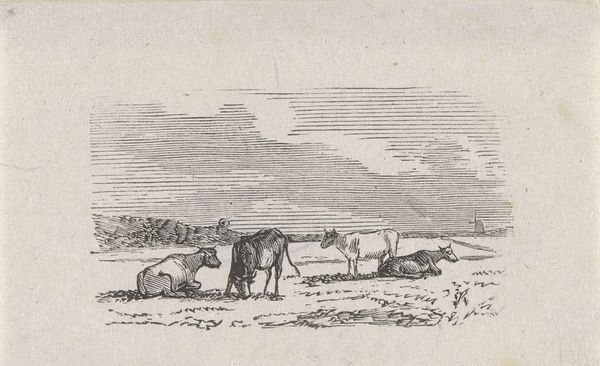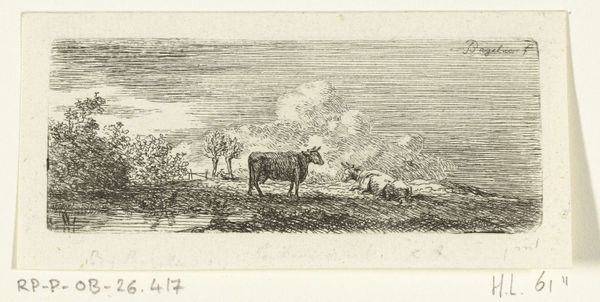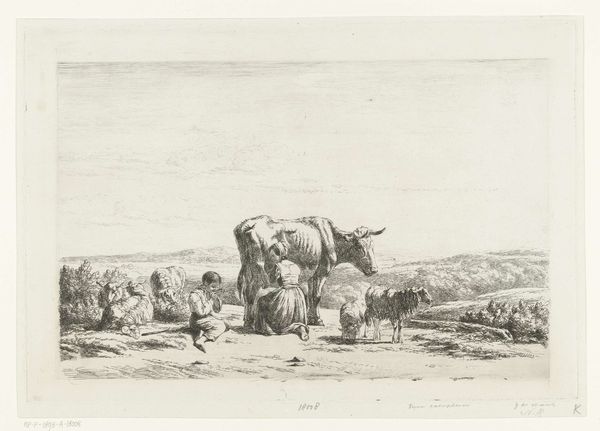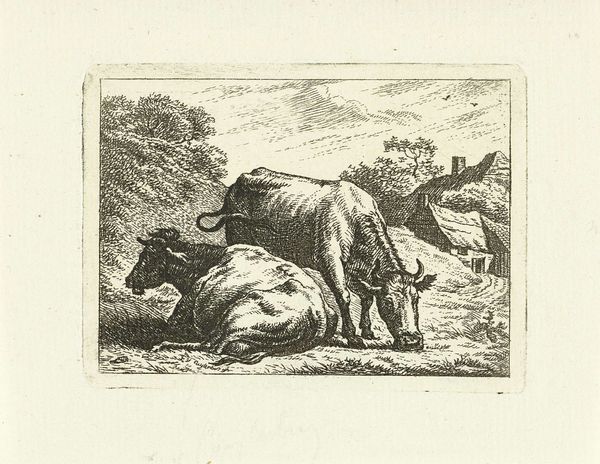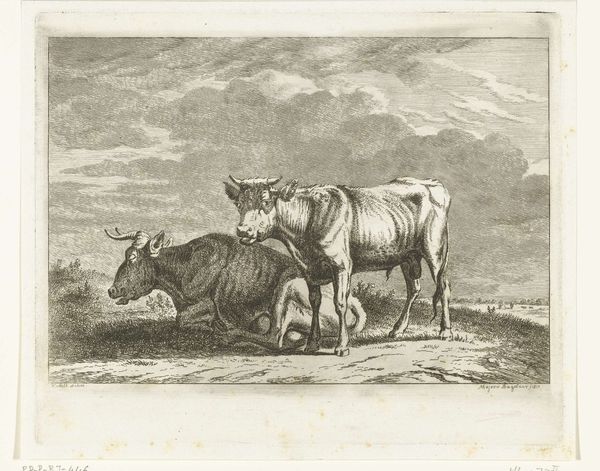
Dimensions: height 213 mm, width 345 mm
Copyright: Rijks Museum: Open Domain
Editor: Here we have "Rivierlandschap met boer en koeien op oever," a river landscape with a farmer and cows on the bank, created between 1746 and 1814 by Carel Frederik Bendorp. It's an etching or engraving and… evokes a quiet pastoral scene, almost melancholy. What do you see in this piece, considering the cultural symbols at play? Curator: Well, consider the symbolism of the resting cows. Throughout art history, they’ve often represented prosperity, peace, and the bounty of nature, but their repose here…it suggests something deeper. It could speak to a longing for simpler times, an idealization of rural life, a kind of cultural memory of an agrarian past even as the world changed. Editor: An idealization, yes, almost a longing! How do you reconcile that idyllic vision with, perhaps, the harder realities of rural life at the time? Curator: Exactly! The image becomes a powerful symbol. We’re presented not with reality, but a carefully constructed vision *of* reality. It’s a curated nostalgia, intended to evoke specific feelings tied to cultural identity and heritage. Bendorp used Cuyp’s pinxit or painting as the source for this print so perhaps the source image presents clues. Editor: So, it’s less about documentary truth and more about conveying an emotion or cultural value through carefully selected imagery. Curator: Precisely. The artist used established visual tropes and compositions that would have resonated with viewers, tapping into a shared understanding of these symbols. It’s visual shorthand. Even the river, the sailing boats…each carries layers of meaning, connecting the viewer to a specific time, place, and set of values. Editor: I see. It’s fascinating how much these images carry, not just on the surface, but underneath, connecting us to cultural narratives and historical perspectives. Thanks. Curator: Indeed. By decoding those visual cues, we gain a richer understanding of the cultural values and ideals circulating at the time, and how those symbols continue to inform our own perceptions.
Comments
No comments
Be the first to comment and join the conversation on the ultimate creative platform.
